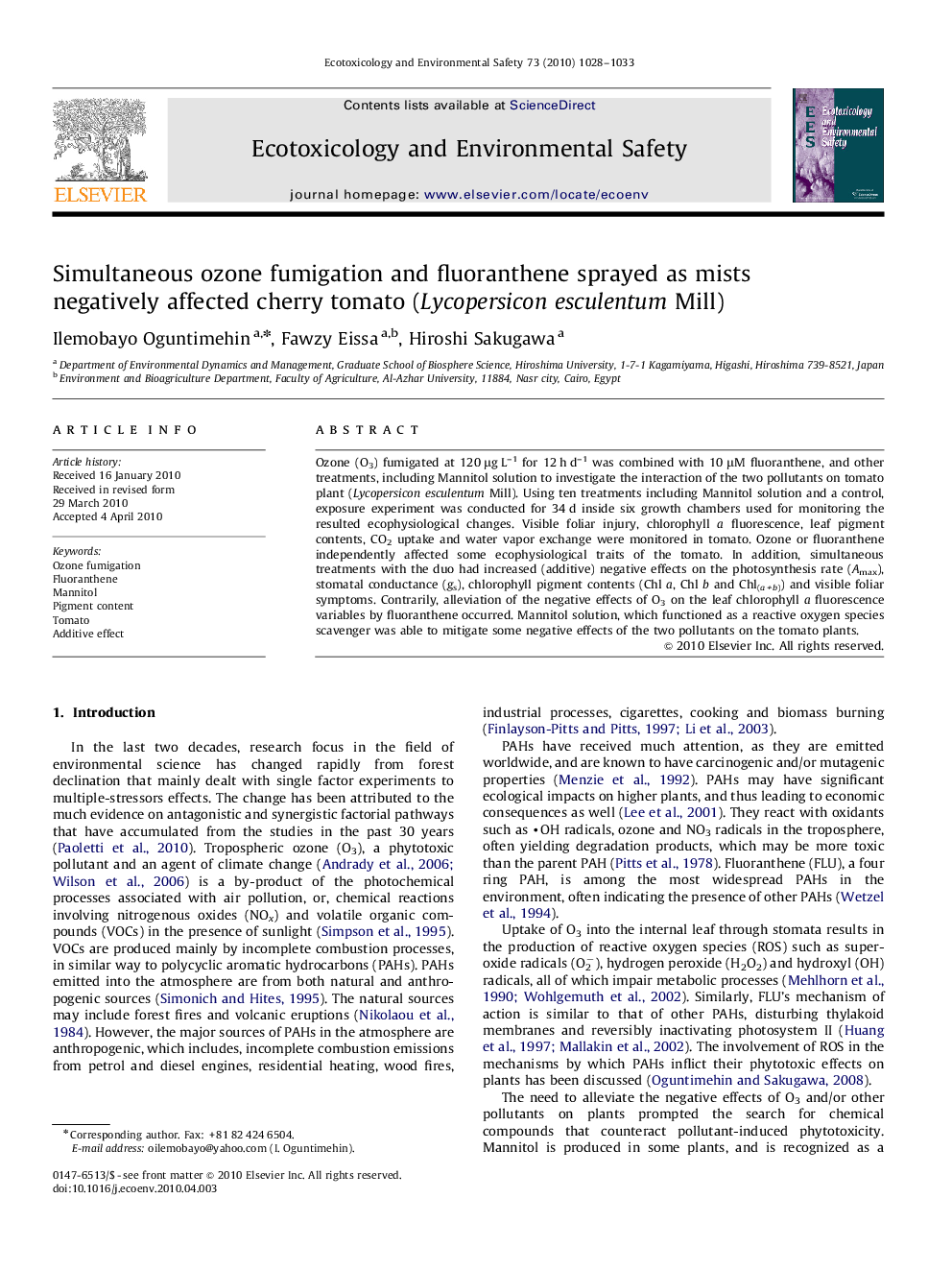| Article ID | Journal | Published Year | Pages | File Type |
|---|---|---|---|---|
| 4421684 | Ecotoxicology and Environmental Safety | 2010 | 6 Pages |
Ozone (O3) fumigated at 120 μg L–1 for 12 h d–1 was combined with 10 μM fluoranthene, and other treatments, including Mannitol solution to investigate the interaction of the two pollutants on tomato plant (Lycopersicon esculentum Mill). Using ten treatments including Mannitol solution and a control, exposure experiment was conducted for 34 d inside six growth chambers used for monitoring the resulted ecophysiological changes. Visible foliar injury, chlorophyll a fluorescence, leaf pigment contents, CO2 uptake and water vapor exchange were monitored in tomato. Ozone or fluoranthene independently affected some ecophysiological traits of the tomato. In addition, simultaneous treatments with the duo had increased (additive) negative effects on the photosynthesis rate (Amax), stomatal conductance (gs), chlorophyll pigment contents (Chl a, Chl b and Chl(a+b)) and visible foliar symptoms. Contrarily, alleviation of the negative effects of O3 on the leaf chlorophyll a fluorescence variables by fluoranthene occurred. Mannitol solution, which functioned as a reactive oxygen species scavenger was able to mitigate some negative effects of the two pollutants on the tomato plants.
